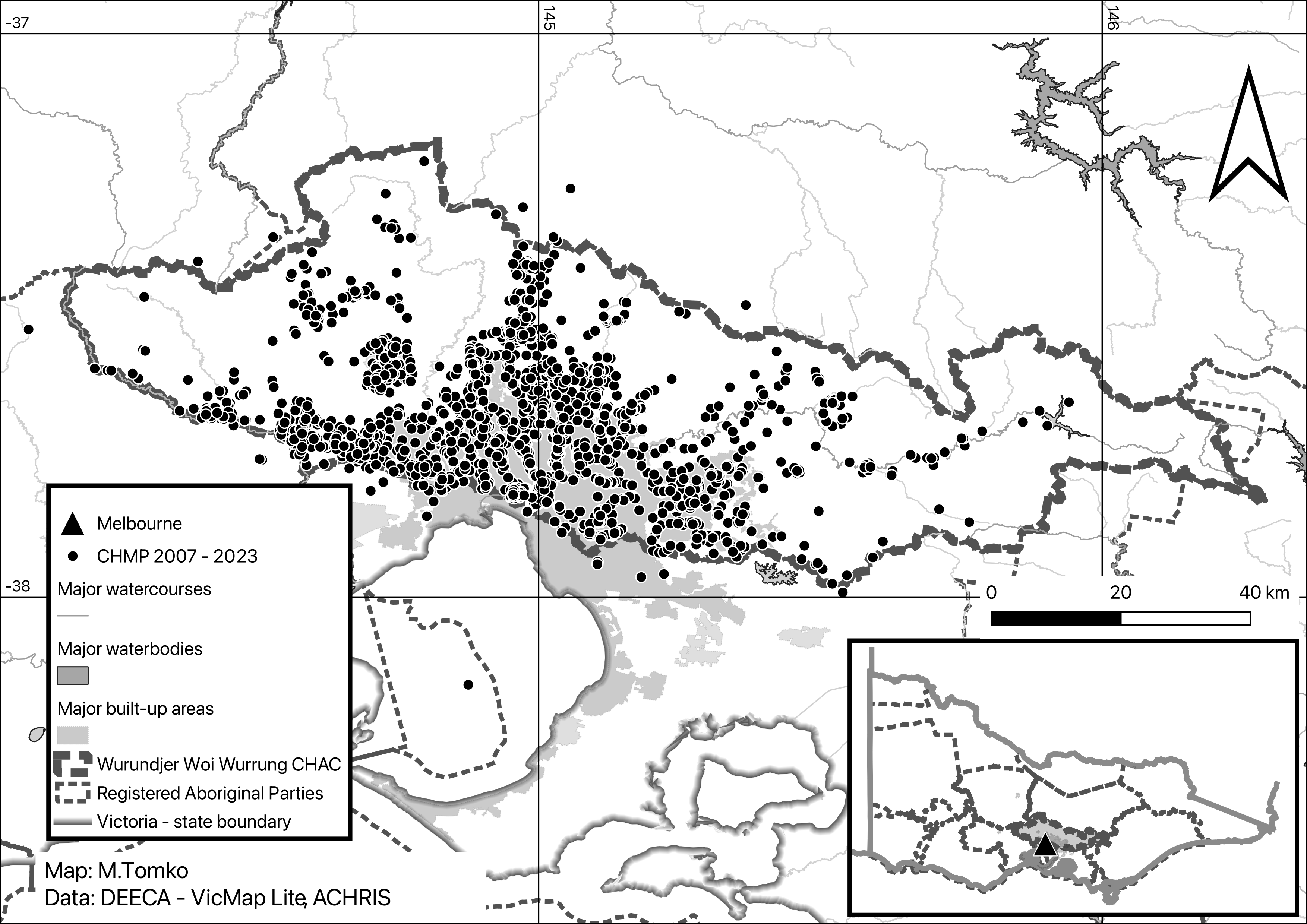What is a Cultural Heritage Management Plan?
A CHMP is a report detailing the assessment and outcome of a proposed high-impact activity taking place within an area of cultural heritage sensitivity. Traditional Owners will consult the sponsors and developers on how they can avoid or minimise harm in order to protect and preserve Aboriginal cultural heritage.

Image: First Peoples-State Relations
Cultural Heritage Management Plans | firstpeoplesrelations.vic.gov.au
When is a CHMP required?
Under the Aboriginal Heritage Act 2006 and Aboriginal Heritage Regulations 2018, a CHMP is required when a ‘high-impact activity’ is planned within an area of ‘cultural heritage sensitivity’. Cultural sensitivity can be defined as:
- 50m from an area known to contain cultural heritage. eg. artefacts, scarred trees, quarries, burials.
- 200m from a waterway.
For more information on Cultural Heritage Management Plans in Victoria, click here.
CHMP’s within Wurundjeri Woi-wurrung RAP area
As of January 2024, Wurundjeri Corporation are responding to 483 active CHMPs, and 35 active CHMPs undergoing evaluation.
CHMPs within Wurundjeri RAP between 2007 – 2023

Frequently asked questions (FAQ)
Is the CHMP process affecting housing prices?
Aboriginal cultural heritage legislation has been unfairly targeted as a root cause of the housing crisis in recent media reports when it is a multifaceted and complicated issue in which labour shortages, rising interest rates, supply chain problems, extreme weather events, and the collapse of building companies all play a part.
Are CHMPs causing delays in housing development?
In reality, most large-scale residential developments naturally take many years to complete, with the many other steps in this process including prepurchase, settlement/preplanning, town planning, construction documentation/tenders, construction, sales/marketing.
How much does a CHMP cost?
The costs for CHMP assessments are proportionate to the size of the proposed activity (development) area. This means a smaller activity area requires a smaller scale assessment, and a larger activity area requires a larger scale assessment.
How is the area assessed?
For any activity area, a rigorous field assessment (survey and excavation) enables the nature, extent, and significance of Aboriginal cultural heritage in an activity area (if present) to be determined for the sponsor (developer) and their CHMP. This is a requirement under the Act.
This process is important for helping the Sponsor establish what Aboriginal cultural heritage is present in their activity area, and how they can work with the RAP to avoid, minimise, or mitigate harm to it.
Without such an assessment, the sponsor is at risk of inadvertently harming Aboriginal cultural heritage during their activity, which is an offence under the Aboriginal Heritage Act 2006 and attracts substantial penalties.
What happens if Aboriginal cultural heritage is found?
If Aboriginal cultural heritage is identified during a CHMP assessment, the RAP works closely with the sponsor to see if it’s possible to redesign the development in a way that avoids or reduces harm to it, while maintaining housing density requirements.
This also avoids the need for an archaeological salvage program to remove the Aboriginal cultural heritage from the activity area. Again, it’s not reasonable to say that RAPs are demanding archaeological salvages, as archaeological salvages are only required when developers choose to destroy rather than protect Aboriginal cultural heritage.
What developers can do before purchasing land?
Developers have access to LiDAR data to identify and save culturally significant Aboriginal places before purchasing land.
It is possible to complete a CHMP before a land purchase, to determine if Aboriginal cultural heritage is present, and the nature, extent, and significance of any Aboriginal cultural heritage (if present).
What about buying land that has identified areas of culturally sensitivity?
Buying land with culturally sensitive areas increases the risk of identifying cultural material, and the RAP has obligations to ensure sponsors are protecting those areas, ideally by harm avoidance (open spaces/parks), which doesn’t attract salvage costs that are being “passed onto home buyers”.
